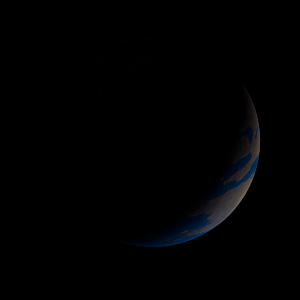|
|
Space Astro
|
Info for exoplanet "Pemya"
| Scientific (actual) data |
|---|
| Planet | Kepler-621 b |
| Planet status | Confirmed |
| Radius | 0.205 |
| Orbital period | 2.62811 |
| Discovered | 2016 |
| Updated | 2021-02-05 |
| Tconj | 2455000 |
| Publication | Announced on a website |
| Detection type | Primary Transit |
| Alternate names | 2MASS J19234254+3954509 b, K00605.01, KIC 4832837 b, KOI-605 b, KOI-605.01, WISE J192342.54+395450.9 b |
| Star name | Kepler-621 |
| Right ascension | 290.93° |
| Declination | 39.91° |
| Mag j | 13.153 |
| Mag h | 12.529 |
| Mag k | 12.407 |
| Star distance | 389 |
| Star metallicity | -0.02 |
| Star mass | 0.72 |
| Star radius | 0.68 |
| Star age | 3.63 |
| Star temperature | 4521 |
| Star alternate names | 2MASS J19234254+3954509, KIC 4832837, KOI-605, WISE J192342.54+395450.9 |
| Wikipedia article | Kepler-621 b |
Back
| |
| Fictional info (?) |
|---|
| Suggested name | Pemya |
| Planet type | Cold planet |
| It has the longest rotation period (445 days) of any planet in its solar system and rotates in the opposite direction to most other planets.
This planet is named after the deity Pemya, the demon of the sky.
As one of the brightest objects in the sky, Pemya has been a major inspiration in native culture for as long as records have existed. Pemya was one of the first planets to have its motions plotted across the sky - as early as the second millennium BC. |
| Atmosphere | Helium | 48% |
| 2H2O | 28% |
| Carbon monoxide | 21% |
| Sulfur dioxide | 0.93% |
| Neon | 0.63% |
| Water vapor | 0.33% |
| Krypton | 0.31% |
| Oxygen | 0.0029% |
| Atmospheric pressure | 1.9 bar |
 |
| No known satellites |
| Google search for Pemya |
|
Website by Joachim Michaelis
|
|
|
|